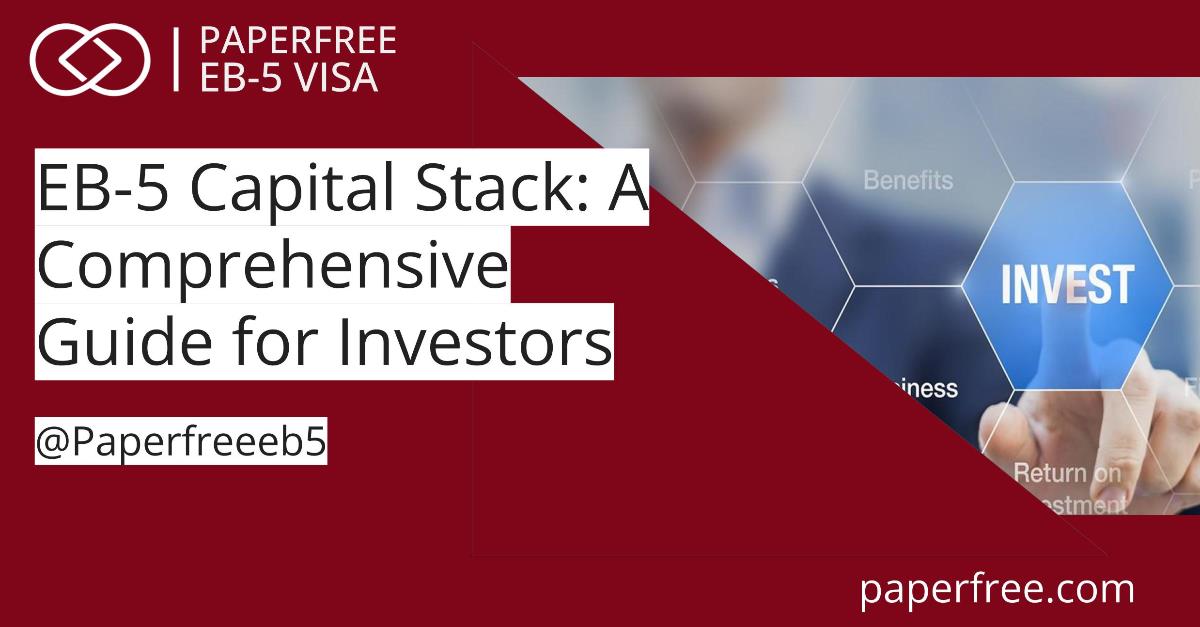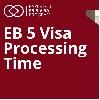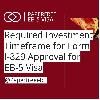EB-5 Capital Stack: A Comprehensive Guide for Investors
A Comprehensive Guide to Understanding and Evaluating the Financial Structuring of EB-5 Investmentslast updated Friday, February 7, 2025
#eb-5 capital #EB-5 Capital Stack
| | John Burson | Subscribe |

QUICK LINKS
AD
Get access to EB 5 Visa Investment Projects
As EB-5 investors increasingly shift their focus from immigration benefits to investment returns, understanding the financial structuring of an EB-5 project becomes paramount. While the primary goal of the EB-5 program remains obtaining a U.S. Green Card, investors are now more concerned about recouping their capital and potentially profiting from their investment. This transition in focus is driven by a growing understanding of the program and a demand for greater transparency from regional centers.
In this comprehensive guide, we will explore the EB-5 capital stack, a crucial element that can impact the likelihood of capital repayment and the overall success of an EB-5 investment. By examining the components of the capital stack and evaluating how to assess it effectively, you can make well-informed decisions to protect and grow your investment.
What Is a Capital Stack?
A capital stack represents the different layers of capital used to finance a project. In an EB-5 investment, it outlines the order in which investors receive profits and capital repayment. It typically comprises layers of capital used in real estate development projects, particularly in EB-5 rural targeted employment area (TEA) projects.
In the context of the EB-5 program, understanding how these components work is crucial for assessing the risk and return potential of your investment. Each layer of the capital stack carries different risk levels and repayment priorities, so understanding them will help you make more informed investment choices.
Components of an EB-5 Capital Stack
The capital stack for an EB-5 project typically includes four main components: senior debt, mezzanine debt, preferred equity, and common equity. These components are ordered based on repayment priority and risk, with senior debt being the least risky and common equity being the most risky.
1. Senior Debt
Position in Stack: Lowest
Priority: Highest
Characteristics:
- Senior debt is the first to receive repayment, both in terms of interest/dividends and capital repayment.
- This component is typically secured through repayment guarantees or first-lien mortgages.
- Because of its low risk, senior debt usually carries lower interest rates.
- It usually accounts for 50% to 60% of the total cost of the project.
Evaluation Criteria:
- Sunk Financing Costs: High costs or poor structures can lead to project failure, particularly in adverse economic conditions.
- Repayment Priority: Senior debt's position as the first to be repaid makes it the least risky option.
2. Mezzanine Debt
Position in Stack: Above Senior Debt
Priority: Lower than Senior Debt, Higher than Equity
Characteristics:
- Mezzanine debt receives repayments only after senior debt has been paid off.
- It is typically unsecured, although it may be backed by a pledge of ownership interests if stipulated in an inter-creditor agreement.
- Due to its higher risk, mezzanine debt typically comes with higher interest rates than senior debt.
- It generally accounts for 25% to 40% of the total project cost.
Evaluation Criteria:
- Intercreditor Agreement: It is essential to enforce ownership rights and ensure proper repayment priority.
- Loan Extension Terms: The terms and impact of extended loan periods, especially with increased interest rates, should be considered.
3. Preferred Equity
Position in Stack: Above Mezzanine Debt
Priority: Higher than Common Equity, Lower than Debt
Characteristics:
- Preferred equity investors are repaid after all debt obligations but before common equity holders.
- This component typically offers higher returns than debt, often with fixed returns and profit-sharing features.
- It carries more risk than debt but less than common equity.
Evaluation Criteria:
- Payout Conditions: Returns are paid out only when the project generates positive cash flow, which reduces risk by preventing sunk financing costs.
4. Common Equity
Position in Stack: Highest
Priority: Lowest
Characteristics:
- Common equity holders receive dividends or profit shares only after all debts and preferred equity obligations have been met.
- While it offers the highest potential returns, it is the riskiest component, suitable for investors who have a higher risk tolerance.
- Common equity typically involves long-term investments and can yield significant profits if the project succeeds.
Evaluation Criteria:
- Offering Documents: It’s essential to thoroughly review the offering documents to understand the repayment priority for common equity shares.
How to Choose the Right Financial Structuring for Your EB-5 Investment
When investing in EB-5 projects, choosing the right financial structuring based on your risk tolerance and investment goals is crucial. You will need to consider the following:
- Risk Tolerance: If you have a lower risk tolerance, senior or mezzanine debt might be more suitable due to their more secure and quicker returns. For those seeking higher potential returns with greater risk, common or preferred equity may be more attractive.
- Investment Goals: If your primary concern is quick capital repayment, EB-5 loans (senior and mezzanine debt) are generally more appropriate. However, if you’re seeking higher long-term returns, equity-based investments (preferred and common equity) may be a better choice.
- Regional Center Offerings: Each regional center may have different structuring options for EB-5 projects. Ensure you understand the specific offerings available in the projects you are considering.
- Loan vs. Equity Structures: EB-5 projects can be structured either as loans or equity investments. Loans (senior and mezzanine debt) are more secure and typically provide faster repayment, while equity (preferred and common) offers higher potential returns but comes with higher risk.
Frequently Asked Questions (FAQ)
1. What is the capital requirement for EB-5?
The capital requirement for an EB-5 investment is typically $1.8 million. However, if the investment is made in a Targeted Employment Area (TEA), the requirement is reduced to $900,000.
2. Do EB-5 investors get their money back?
EB-5 investors aim to recoup their capital once the investment project is completed and profitable. However, the return on capital is not guaranteed and depends on the success and financial structuring of the project.
3. What is the capital stack in private equity?
In private equity, the capital stack refers to the hierarchy of different financing sources used in a project. This includes senior debt, mezzanine debt, preferred equity, and common equity, each with varying risk and return priorities.
4. What is the investment structure of EB-5?
The investment structure of EB-5 typically involves either debt or equity financing. It can include senior debt, mezzanine debt, preferred equity, and common equity, each offering different levels of risk, return, and repayment priority.
5. What is the top of the capital stack?
Common equity is at the top of the capital stack in terms of potential returns but also bears the highest risk. Common equity holders receive dividends or profit shares only after all other debts and preferred equity are settled.
6. What is the most secure capital stack?
Senior debt is considered the most secure position in the capital stack. It holds the highest priority for interest and capital repayment, often secured through repayment guarantees or first-lien mortgages, making it the least risky form of financing.
Paperfree Can Help You Assess EB-5 Investment Risks
The financial structuring of EB-5 investments—whether structured as loans or equities—significantly impacts both profitability and the speed of capital repayment. Due diligence in evaluating the financial structure is critical to assessing the risks associated with an EB-5 investment.
Book Your Free Consultation with Paperfree EB-5 Visa Experts. Get Personalized Advice and Investment Plans. Book Your Free Consultation Today!

Services Offered by Paperfree:
- Project Assessment: We help you evaluate the financial risks of EB-5 projects to ensure the likelihood of successful repayment.
- Experience: Our extensive track record of assisting investors in navigating the EB-5 process ensures you have the expert support needed.
- Consultation: We offer personalized consultations with experienced EB-5 professionals to guide you in selecting the right investment structure for your financial goals.
Schedule a consultation with our experts today for more information and to get assistance in evaluating and choosing the best EB-5 investment structure.
Free Consultation
Similar Pages
- Non bank Lenders Take Center Stage

- EB-5 Visa Program by Paperfree.com is Your Your Clear Path to Investment Green Card USA

- EB 5 Visa Requirements 2024, A Guide To on eligibility for U.S. Investment-Based Residency

- EB5 Processing Time: A Journey Towards Green Card 2024 | Paperfree.com

- EB-5 processing time by country 2025

- EB-5 Visa Residency Requirements. Is EB 5 Visa for Me? Other visa options EB5 vs E2 vs L1

- Investment timeframe for Form I-829 approval for EB5 Visa

- EB-5 Integrity Fund Updates for Fiscal Years 2023 and 2024

Popular
Benefits of the EB-5 Visa Program | Guide
Search within Paperfree.com
